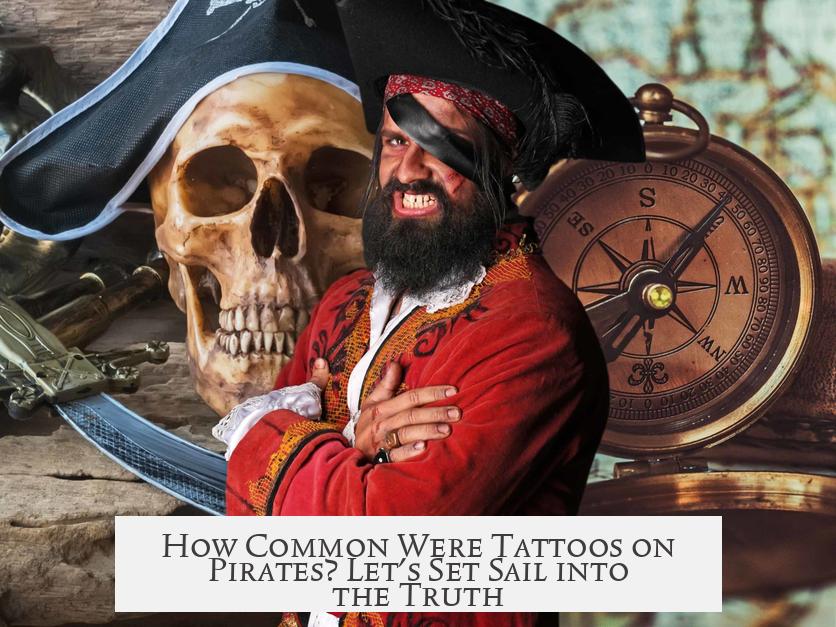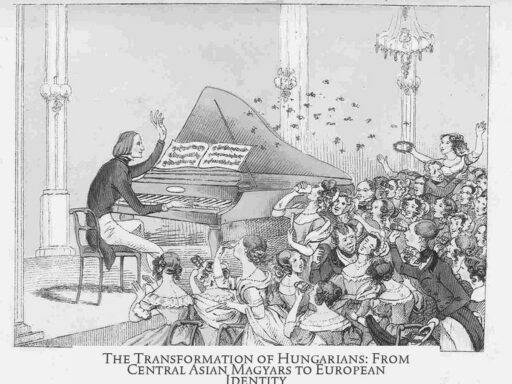Tattoos among pirates during the Golden Age of Piracy were likely rare and marginal, with little concrete evidence confirming their prevalence. Historical and scholarly resources provide minimal documentation of tattooing practices in pirate communities between the late 17th and early 18th centuries, leaving the topic largely uncertain.
The main challenge in assessing pirate tattoos lies in the overall poor documentation of piracy and tattoo histories. Piracy during this era (approximately 1690–1730) is notoriously under-researched. Records from the period often focus on naval battles, legal proceedings, and economic aspects rather than the personal customs or appearances of pirate crews. Additionally, systematic study of tattoos themselves is limited for this period, as tattoo culture and history gained clearer documentation mostly after the age of piracy.
By the late 18th and 19th centuries, more evidence is available on tattooing among sailors and even criminals, showing a more widespread and recognized practice. However, such records do not extend back into the core years of pirate activity. This lack of specific data means historians and researchers cannot definitively state how common tattoos were among pirates.
Within Europe, tattooing existed but remained a niche, often religious practice during the Golden Age of Piracy. European Christians who undertook pilgrimages to the Holy Land frequently commemorated their journeys with tattoos showing religious icons, such as crosses, Christ’s name, or other symbols of Christian faith. These tattoos served as permanent reminders of spiritual voyages and were sometimes created by local tattoo artisans practicing a form of puncture tattooing.
- Travelers’ accounts from the early 1600s include reports of pilgrims receiving tattoos in Jerusalem. For example, the Scottish traveler William Lithgow described having Christian symbols tattooed on his arms in 1612.
- Another English visitor, Henry Maundrell, wrote in 1697 about pilgrims marking their arms with typical Christian symbols through puncturing the skin.
These examples highlight that tattooing was present among European Christians of the time, but largely tied to religious tradition rather than popular body art. Such tattooing was familiar within certain circles yet was not a widespread social norm.
The terminology surrounding tattoos complicates historical research. The word “tattoo” itself has shifted meaning over centuries. Originally, it referred to drumbeats—often military signals—long before it described skin modifications. Early English sources used phrases like “pricked,” “marked,” or “engraved” to describe what modern readers would call tattoos. This inconsistent vocabulary obscures clear identification of tattoo references in historical documents about pirates or sailors.
Regarding pirates specifically, there is almost no direct evidence that tattoos were common or even typical. Most of the pirate crews associated with the era, especially those of European origin, left no detailed accounts or portraits clearly showing tattoos. Their maritime background raises the question of sailor tattoo culture, but only very few sailors documented prior to 1740 bore tattoos. Among those, religious tattoos connected to pilgrimages stand out as rare exceptions rather than the rule.
The practice of tattooing in European maritime and pirate contexts was at most marginal during this period. It was not yet popularized among broader mariner or pirate populations. While some individuals might have had tattoos, it remains hard to separate factual accounts from later myths and legends surrounding pirate imagery.
Many contemporary images and ideas about pirates having tattoos likely stem from later romanticized interpretations. These include 19th and 20th-century sailor tattoos and popular culture—not the authentic pirate era. Tattooing on sailors, including markings denoting rank, experience, or affiliations, became more recognized after the Golden Age of Piracy.
| Aspect | Golden Age of Piracy (c. 1690–1730) | Post-Golden Age/Sailors (Late 18th–19th Century) |
|---|---|---|
| Documentation of Tattoos | Minimal to none; poorly documented and researched | Extensive records of sailor tattoos, including styles and meanings |
| Typical Tattoo Motifs | Primarily religious (Christian pilgrim tattoos) | Varied; includes nautical symbols, religious, memorial, and personal imagery |
| Prevalence | Marginal and rare among pirates/sailors | More common; widespread in some maritime communities |
The concept of pirates commonly sporting tattoos is likely exaggerated in hindsight. Limited historical research and sparse evidence point to tattoos being exceptions rather than norms in pirate crews. The association of tattoos with pirates has more to do with later sailor culture and mythmaking than documented reality from the Golden Age itself.
In summary:
- Tattooing among 17th and early 18th-century pirates is poorly documented and likely rare.
- Christian pilgrim tattoos represented the primary form of tattooing for Europeans at that time.
- Terminology and vocabulary inconsistencies complicate identifying historical tattoos in old texts.
- More extensive tattoo practices emerge among sailors after the Golden Age of Piracy, not during it.
- Popular culture’s image of tattooed pirates reflects later maritime tattoo traditions more than historical fact.
How Common Were Tattoos on Pirates? Let’s Set Sail into the Truth

Short and honest answer: We just don’t know how common tattoos were on pirates during the Golden Age of Piracy, roughly 1690–1730. The historical record is patchy, with few reliable sources. Both pirate and tattoo history during this time are poorly documented, leaving us scratching our heads more often than mapping treasure.
It’s tempting to picture every pirate decked out with inked skulls and anchors, but the truth is murkier. Let’s dive into the murky waters of pirate tattoo history—and no, there’s no buried chest of evidence waiting to be found.
Poor Documentation: The Biggest Pirate Plank of Them All
Researching the Golden Age of Piracy is notoriously tricky. Few records survive. Many were lost, destroyed, or simply never made. If you thought historical facts were solid, pirates put those ideas on the back burner.
Similarly, tattoo history isn’t well recorded from this period. Sailors and criminals gained tattoos more widely in the late 18th and 19th centuries. However, for the 17th and early 18th centuries—the heyday of piracy—evidence is minimal.
This lack of documentation means historians often speculate or rely on less-than-solid sources, leading to what’s called “sloppy scholarship.” So, the mythology outpaces the facts.
What About Tattoos in Europe at the Time?

Interestingly, tattoos weren’t unheard of in Europe back then. Some Europeans, especially Christians who made pilgrimages to the Holy Land, got religious tattoos.
For example, William Lithgow, a Scottish traveler in 1612, wrote about a man in Bethlehem who engraved the name of Jesus and the Holy Cross on pilgrims’ arms, as well as symbols celebrating King James.
Henry Maundrell, another Church of England pilgrim, described in 1697 how pilgrims got marks on their arms depicting Jerusalem’s holy signs. This was done by “small punctures,” basically early tattooing.
These examples show tattoos in the 17th century had a religious and commemorative meaning, especially among devout Christian Europeans—not quite the rebellious pirate imagery Hollywood sells.
Confusing Vocabulary Clouds the Picture
Another hitch? The word “tattoo” in English didn’t originally mean body ink but rather a drumbeat or military signal. Early tattooing was called marking, engraving, or pricking the skin.
This shifting terminology means many references to “images on skin” from that era might not use the word “tattoo” at all. If historians only search for the term “tattoo,” many clues get missed—like looking for a map that uses a different language.
So, Were Pirates Tattooed? The Pirate Angle
Talking about European-descended pirate crews from 1690 to 1730, there’s virtually no solid evidence that tattoos were common. Sure, pirates were sailors, and some sailors did have tattoos—but those occurrences are rare before 1740.
Most documented sailors’ tattoos from the late 18th and 19th centuries often followed religious themes or commemorations, similar to pilgrim tattoos. Tattoos among sailors and criminals were considered a marginalized practice—meaning they weren’t widespread or popular social norms.
In other words, even if some pirates had tattoos, it was probably not a widespread fashion choice. Not every cutlass-wielding rogue was flaunting an anchor on his arm.
Why Does This Matter? Why Do People Care?
We love the romanticized image of pirates adorned with tattoos—anchors, skulls, mermaids, and hearts. It fuels books, movies, and Halloween costumes galore.
Yet, peeling back the layers reveals a much less colorful reality. Tattoos were a niche, not a norm, especially in the Golden Age of Piracy.
Understanding this helps us appreciate the history while recognizing how myth shapes culture. Pirates might have been colorful characters in personality, if not body art.
Is There Any Practical Advice for Tattoo Lovers Inspired by Pirates?
- Don’t assume pirate tattoos are historically authentic. They are more pop culture than fact.
- If you want a pirate-inspired tattoo, embrace the myth while knowing it is a symbol of storytelling.
- For history buffs, explore sailor tattoos from the late 18th and 19th centuries for more accurate designs.
- Remember, tattoos have long been markers of identity, belonging, or belief—whatever your “Golden Age.”
Final Thought: The Mystery Remains
The question “How common were tattoos on pirates?” sails into uncertain seas. No definitive charts, no reliable maps.
We know early Christian pilgrims tattooed themselves. We know sailors later on did too—but the Golden Age pirates? The historical record barely drops an anchor on this topic.
So, next time you see a pirate with face and neck tattoos, smile at the storytelling flair. It’s a bit more fiction than fact, but a whole lot of fun.
What’s your take? Do you think the pirate tattoo myth adds to their allure or distracts from the real history? Drop your thoughts—let’s unravel this mystery together.
Were tattoos common among pirates during the Golden Age of Piracy?
There is no solid evidence that tattoos were common among pirates from 1690 to 1730. Records from that era rarely mention tattoos. The practice was generally rare and marginalized at that time.
Did European sailors have tattoos in the 17th and early 18th centuries?
Few European sailors had tattoos before 1740. Most known tattoos were religious symbols acquired by Christians who visited the Holy Land. Common sailor tattoos became more documented only after the 18th century.
Why is it difficult to study tattoos on pirates?
Research on piracy and tattooing in that period is limited due to poor documentation. Additionally, the word “tattoo” was used differently, complicating historical records of body markings.
What kind of tattoos did early modern European Christians have?
Some Christians marked themselves with religious images during pilgrimages to Jerusalem. These tattoos involved small punctures along lines forming crosses or names, serving as pilgrimage souvenirs.
Did the meaning of the word “tattoo” affect how tattoos were recorded historically?
Yes. The term originally referred to drumbeats, not body markings. Early references to tattoos used varied phrases, making it harder to identify tattoos in old texts precisely.



